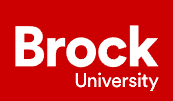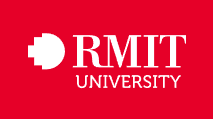A Study on Subtitle Translation of the Film Flipped from the Perspective of Eco-translatology
DOI:
https://doi.org/10.63313/SSH.9044Keywords:
Eco-translatology, Flipped, subtitle translation, three-dimensional transformationsAbstract
In an era marked by intensifying global interactions in film and television culture, audiovisual works emerge as crucial vehicles for cultural dissemination. The quality of subtitle translation directly shapes cross-cultural audiences’ comprehension and acceptance. Constrained by time, space, and cultural differences, subtitle translation often faces dual challenges of language conciseness and meaning preservation. This study employs the Eco-translatology as its framework and uses the film Flipped as a case study to explore how film subtitle translation achieves balance among linguistic, cultural, and communicative ecosystems through “multi-dimensional adaptation and selection” The research aims to provide practical reference for enhancing cross-cultural audiovisual communication effects and concretizing applications of Eco-translatology.
References
[1] Aksoy, N. B. “Insights into a New Paradigm in Translation: Eco-translation and Its Re-flections” [J]. Babel, 2020(66): 29-45.
[2] Aurilana, G. I. “The Impact of Translation Techniques Toward Translation Quality of Ja-vanese Swear Words in Subtitle Film Yowis Ben 2” [J]. International Journal of Multicul-tural and Multireligious Understanding, 2022(9): 111-112.
[3] Baharuddin. “An Analysis of Translation Techniques Used by Subtitle Writer of the Angry Birds Movie” [J]. JEEF: Journal of English Education Forum, 2021(1): 1-9
[4] Chen, S. “Subtitle Translation of Red Film from the Perspective of Purpose Theory” [J]. BCP Social Sciences & Humanities, 2022(16): 576-582.
[5] Cronin, M. Eco-Translation: Translation and Ecology in the Age of the Anthropocene [M]. London: Routledge. 2017.
[6] Diamanti, L. “Eco-Translation: Raising Ecolinguistic Awareness in Translation” [J]. mediAzioni, 2022(34): 184-198.
[7] Hu, Gengshen. “Translation as Adaptation and Selection” [J]. Perspectives: Studies in Translatology, 2003(4): 283-291.
[8] Jagosh, J., & Boudreau, J. D. “Lost and Found in Translation: An Ecological Approach to Bilingual Research Methodology” [J]. International Journal of Qualitative Methods, 2009(3): 108-112.
[9] Scott, C. “Translating the Nineteenth Century: A Poetics of Eco-translation” [J]. Dix-Neuf, 2015(3): 285-302.
[10] Vinokurov, A., & Geller, D. “Translation as an Ecological Tool for Instrument Develop-ment” [J]. International Journal of Qualitative Methods, 2007(3): 44-46.
[11] Cai Shiyue. Interpreting Film Subtitle Translation from the Perspective of Eco-Translatology [J]. Modern English, 2023(12): 99-101.
[12] .Hu Gengsheng. Eco-Translatology: Background and Foundational Development [J]. For-eign Language Research, 2010(4): 62-67.
[13] Hu Gengshen. Interpreting Eco-Translatology [J]. Chinese Translators Journal, 2008(6): 11-15.
[14] Hu Gengsheng. "Life-Centric" Translation Philosophy: A Philosophical Examination of Eco-Translatology's "Three Questions" [J]. Chinese Translators Journal, 2021(6): 5-14.
[15] Hu Gengsheng & Wang Yuan. Research Paradigm of Eco-Translatology: Positioning, Con-notation, and Features [J]. Foreign Language Teaching, 2024(06): 1-6.
[16] Huai Chao. Subtitle Translation of the Film Green Book: An Eco-Translatology Perspective [J]. Kaifeng Journal of Education College, 2019(09): 76-77.
[17] Li Meng & Zhang Chun. Film Subtitle Translation from an Eco-Translatology Perspective: A Case Study of Avatar: The Way of Water [J]. English Square, 2024(28): 39-42.
[18] Mei Hanqing. Interpretation of Eco-Translatology Research [J]. Journal of Jiamusi Voca-tional College, 2024(08): 37-39.
[19] Nie Shaofeng. Eco-Translatology Perspective on The Great Gatsby [J]. Film Literature, 2014(07): 152-153.
[20] Zhu Longrong. Research on English Subtitle Translation Strategies in Coco [J]. Science & Technology Information, 2022(16): 238-244.
Downloads
Published
Issue
Section
License
Copyright (c) 2025 by author(s) and Erytis Publishing Limited.

This work is licensed under a Creative Commons Attribution 4.0 International License.

















